Introduction
Caldwell 88, or NGC 5823, is located in the southern constellation of Circinus, in the edge of the border with the constellation Lupus. It is an intermediate open star cluster that is not currently visible in north Saskatchewan, since it lies so far south it never crosses the horizon.
Background
The cluster was first described by James Dunlop, a Scottish astronomer, in 1826. Even though its discovery is relatively old, there does not seem to have may scientific articles (at least open-access) available online. The cluster is featured in an article from 1977, in which Gerhard Schnur discusses two UBV sequences (69 stars), north and south of the cluster (Schnur 1977). The constellation in which the cluster is located, Circinus, is the fourth smallest and, along with Norma, forms a pair of constellations that pay homage to drawing instruments (circinus means compass in Latin). It was discovered by French astronomer Nicolas Louis de Lacaille in 1756. Therefore, the cluster was found around 70 years before NGC 5823 was even described.
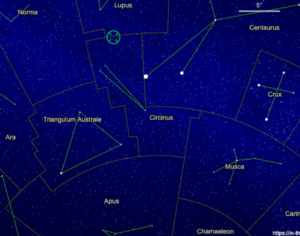
Data available online

Methods
The study was conducted through major online platforms. Using SKYNET, I requested an observation in the PROMPT-MO-1, Prompt2, and Prompt5 telescopes using B,V, R filters, for a total of 15 images (5 with each filter). The total exposure durations for all are, respectively, 80, 30, and 20s. The resulting images were then stacked using Afterglow and data was analyzed using Cluster Pro Plus.
Results
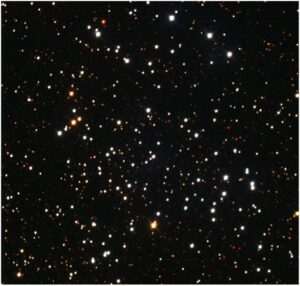

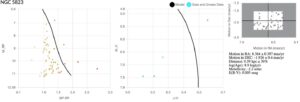
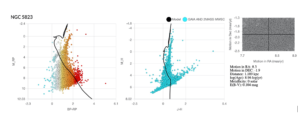
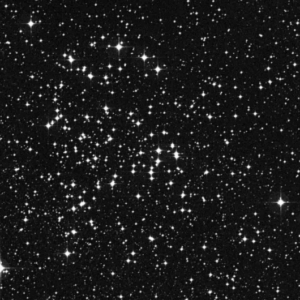
| Motion in RA | 8.364+-0.397 mas/yr |
| Motion in Dec | -1.926+-0.4 mas/yr |
| Distance | 0.59 kpc +-30% |
| log(Age) | 8.9 log (yr) |
| Metallicity | -2.2 solar |
| E(B-V) | 0.005 mag |
Study values located in the table above. Number of stars in my graph: 55, in catalog: 161 (Number of sources was 1175 in Afterglow). Age in years: 10ˆ8.9 years = 794.328.234,7
Discussion
Observing my results, there does not seem to be a bigger difference in my red and dereddened image. Also, my graph does not look anything similar to the graph made using other datasets. This cluster was very hard to analyze, but it did become somewhat easier when using the previous data points, which in my opinion showcases some sort of error maybe in my analysis and creation of the graph. I think that this cluster was far and there was a lot of noise from neighbouring stars, which also harmed my project.
Conclusion
Overall, this cluster project was not my favorite. I think that this cluster needs to be further analyzed with more powerful equipment and maybe for longer. In addition, I found that the website Cluster Pro Plus would crash anytime I tried to input my data (which was a very large file) and made it very difficult to get good results, which I think harmed me a lot and could be the reason why my HR diagram looks wrong.
Thank you for reading until here!
Sources:
https://in-the-sky.org/data/object.php?id=NGC5823
https://in-the-sky.org/data/constellation.php?id=24
https://onlinelibrary-wiley-com.cyber.usask.ca/doi/abs/10.1002/asna.19772980307